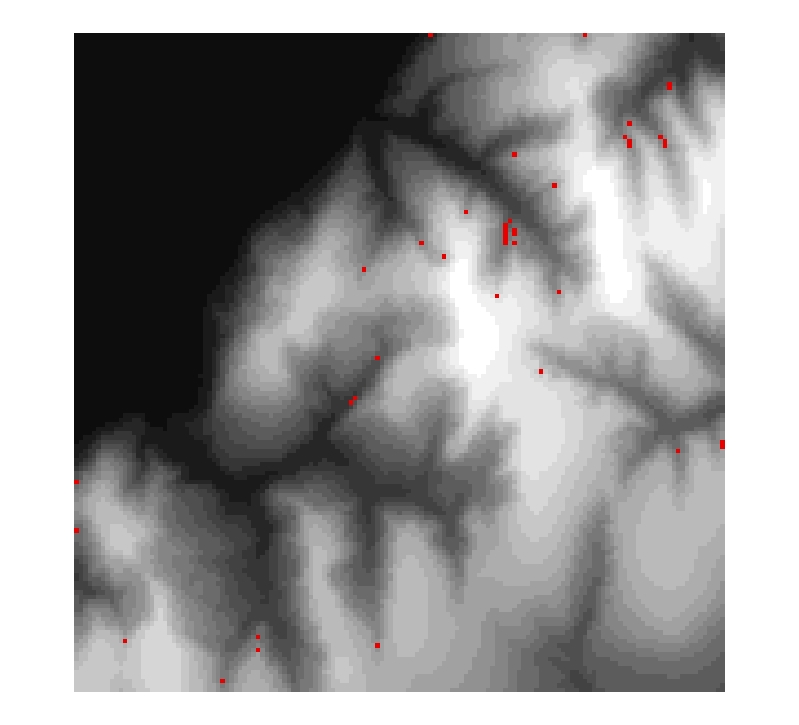Outlier
Detection of Single Pixel Outliers in DEMs using a static or a dynamic thresholding method. Fills the outliers with mowing window data from the surrounding or writes a NODATA value (-4444). Reference: Hengl, T., Reuter, H.I. (eds) 2008. Geomorphometry: Concepts, Software, Applications. Developments in Soil Science, vol. 33, Elsevier, 772 pp. in chapter "Preprocessing" http://dx.doi.org/10.1016/S0166-2481(08)00004-4
INPUT
Input Data - Elevation DEM (Raster Dataset) - a grid representing a continuous surface
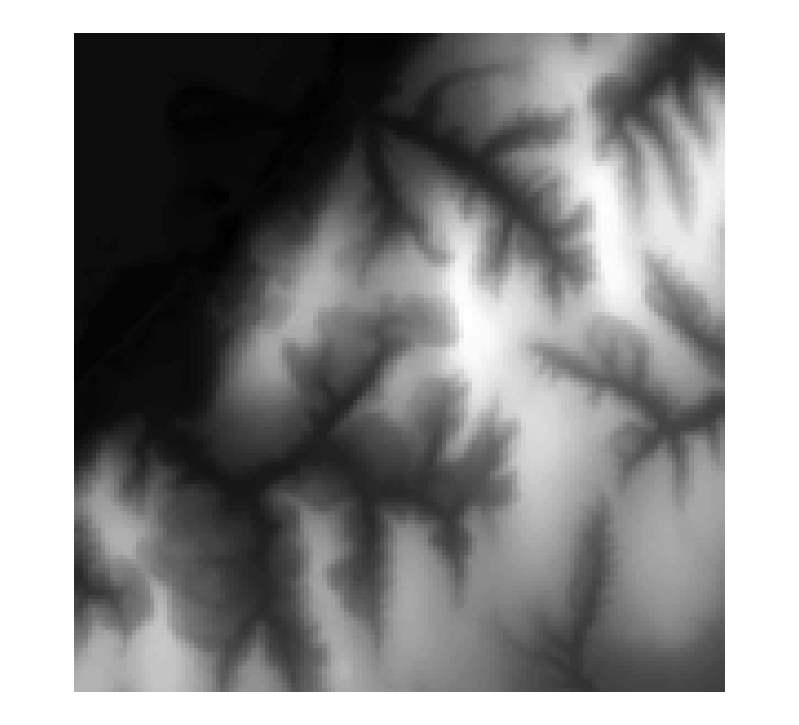
COMMAND
Command Call
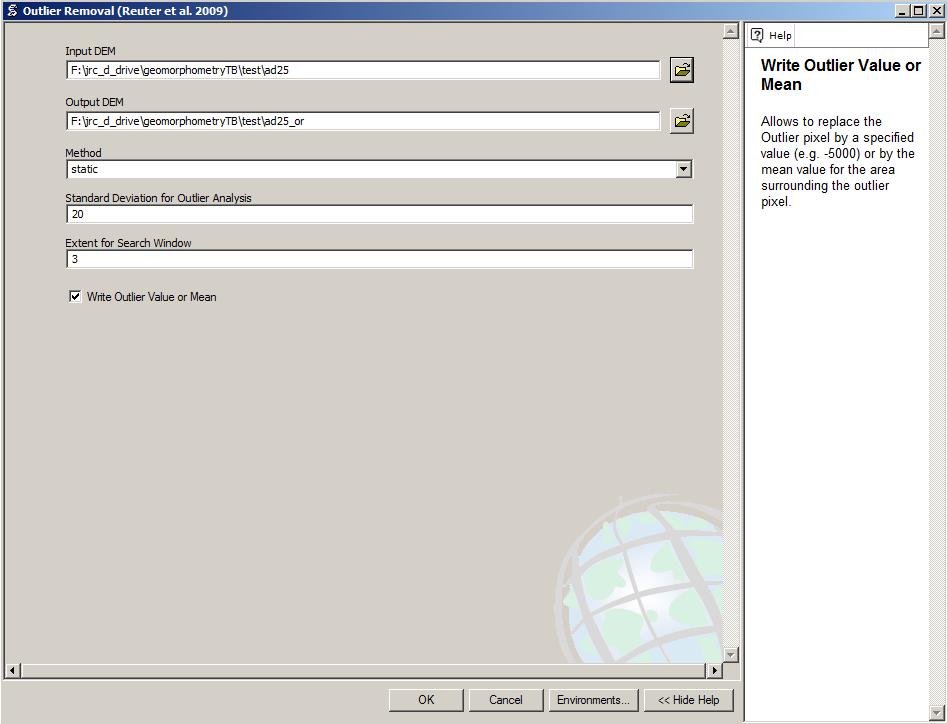
Type of Threshold:
- Static Threshold: The Standard Deviation Threshold is set to a value and is constant over the whole dataset.
- Dynamic Threshold: The Standard Deviation Threshold is calculated based on the Standard Deviation in the Window times the Value given in Standard Deviation for Outlier Values.
Standard Deviation for Detection:
- Case Dynamic Thresholding: In smooth DEMs a value of 2, in rougher/noiser DEMs higher values are needed.
- Case Static Thresholding: Specify the Standard Deviation Value which is supposed to be an outlier (e.g. 20 or 40)
Extent Search Window:
- The window for the Standard Deviation Generation. Large window Sizes increase computation times.
Outlier Value:
- Instead of filling the dataset by a moving window approach a nodata value (-4444) is written to the output grid.
RESULTS
Output DEM (Raster Dataset) - a grid representing a continuous surface
Dynamic 2 SD outliers with average replacement

Dynamic 2 SD outliers with extra ERROR value written
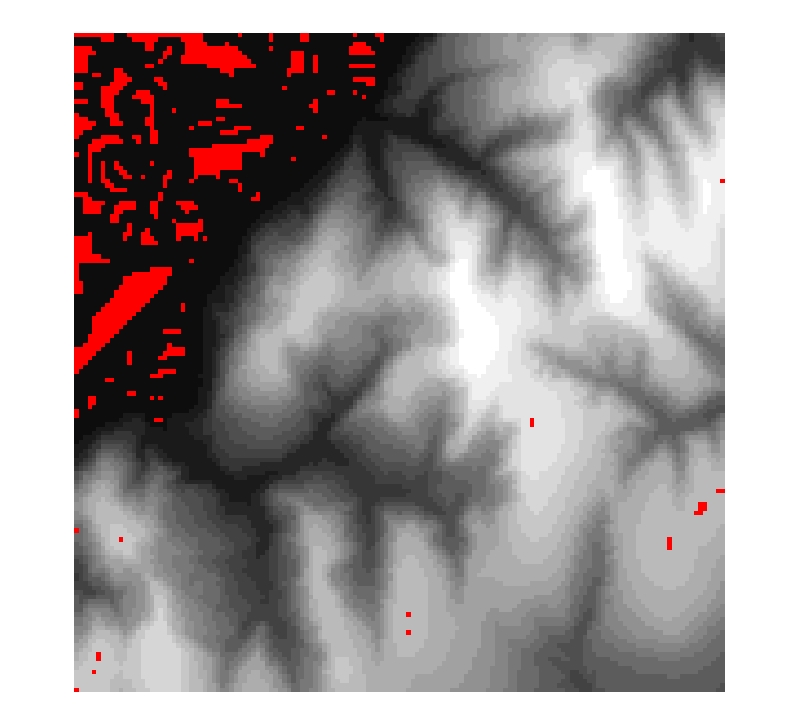
Static threshold of 5m with average replacement
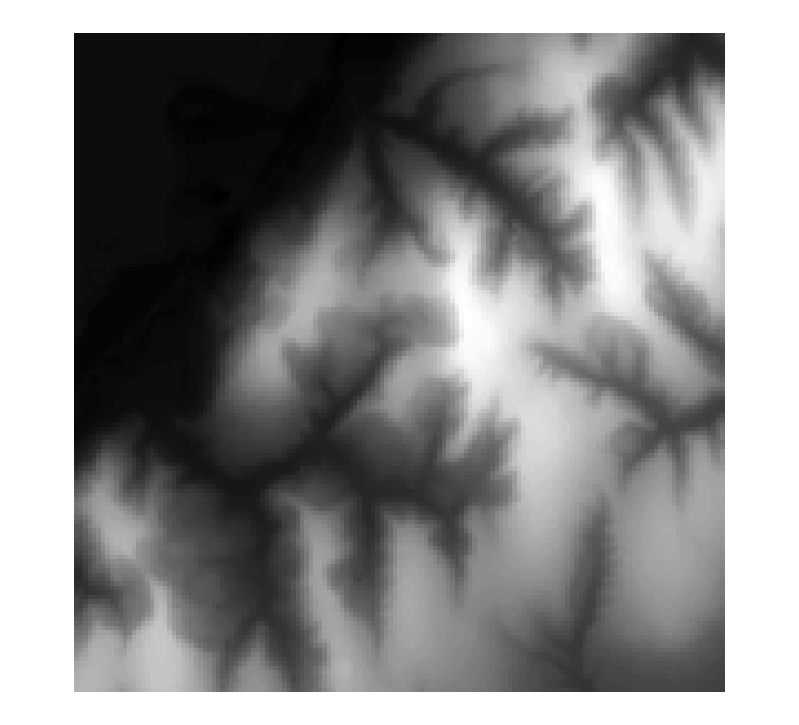
Static threshold of 5m with extra ERROR value written
